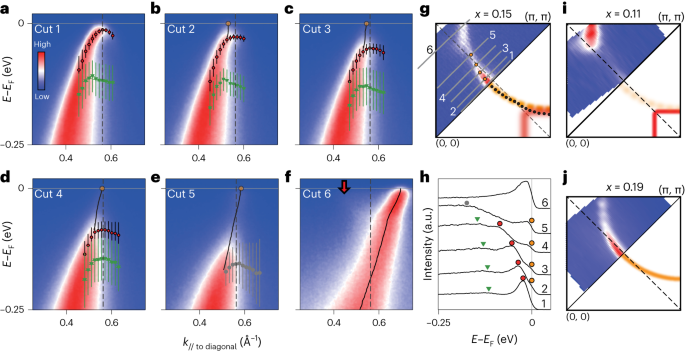Superconductivity
Bogoliubov quasiparticle on the gossamer Fermi surface in electron-doped cuprates
Electron-doped cuprates consistently exhibit strong antiferromagnetic correlations, leading to the prevalent belief that antiferromagnetic spin fluctuations mediate Cooper pairing in these unconventional superconductors. However, early investigations showed that although antiferromagnetic spin fluctuations create the largest pseudogap at hot spots in momentum space, the superconducting gap is also maximized at these locations. This presented a paradox for spin-fluctuation-mediated pairing: Cooper pairing is strongest at momenta where the normal-state low-energy spectral weight is most suppressed. Here we investigate this paradox and find evidence that a gossamer—meaning very faint—Fermi surface can provide an explanation for these observations. We study Nd2–xCexCuO4 using angle-resolved photoemission spectroscopy and directly observe the Bogoliubov quasiparticles. First, we resolve the previously observed reconstructed main band and the states gapped by the antiferromagnetic pseudogap around the hot spots. Within the antiferromagnetic pseudogap, we also observe gossamer states with distinct dispersion, from which coherence peaks of Bogoliubov quasiparticles emerge below the superconducting critical temperature. Moreover, the direct observation of a Bogoliubov quasiparticle permits an accurate determination of the superconducting gap, yielding a maximum value an order of magnitude smaller than the pseudogap, establishing the distinct nature of these two gaps. We propose that orientation fluctuations in the antiferromagnetic order parameter are responsible for the gossamer states.
Momentum-dependent normal-state electronic structure of NCCO.
Nat. Phys. 19, 1834–1840 (2023)
https://rdcu.be/dVaQJ
